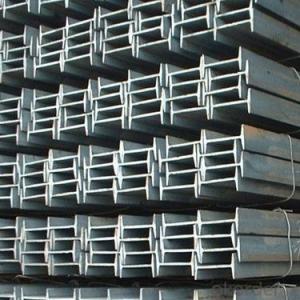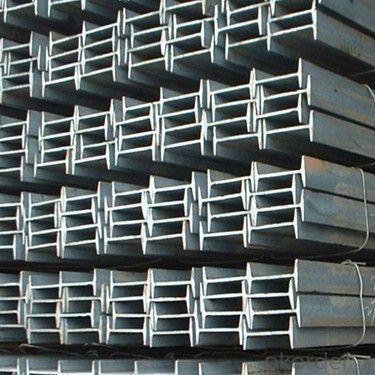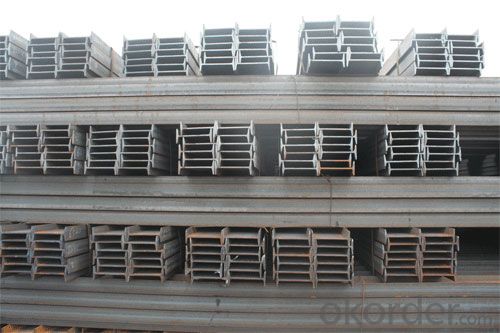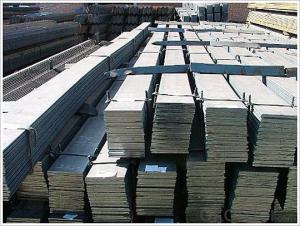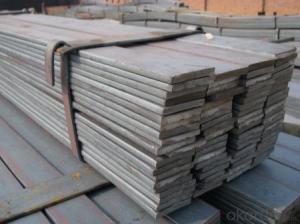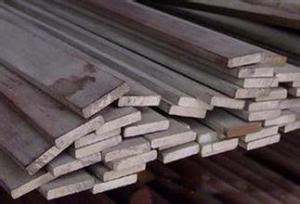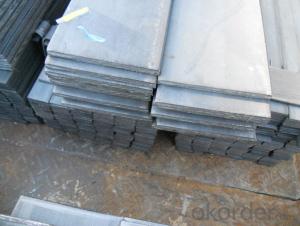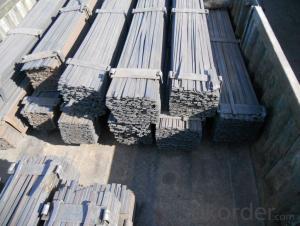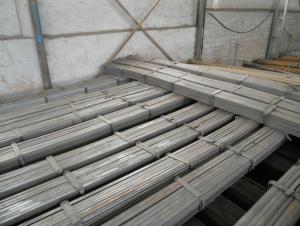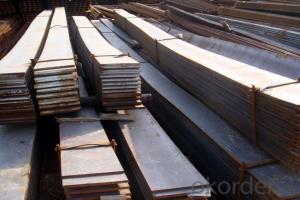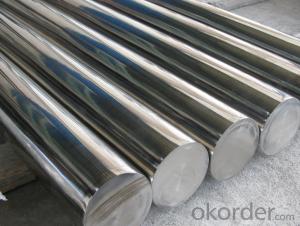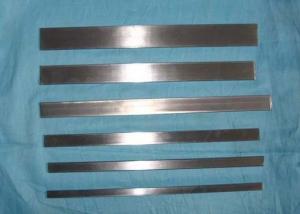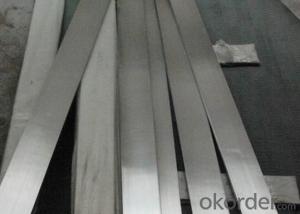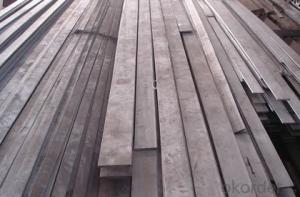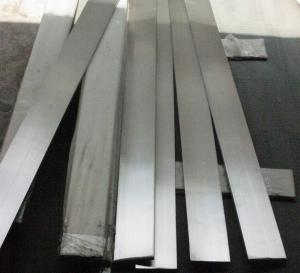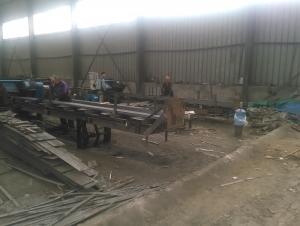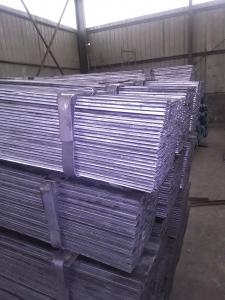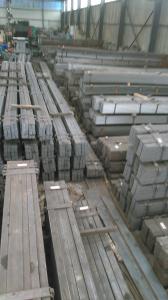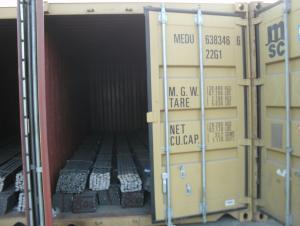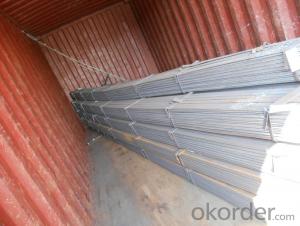Carbon stainless steel flat bar for construction
- Loading Port:
- Tianjin
- Payment Terms:
- TT OR LC
- Min Order Qty:
- 10000 m.t.
- Supply Capability:
- 100000 m.t./month
OKorder Service Pledge
OKorder Financial Service
You Might Also Like
Specification
Product Description:
OKorder is offering carbon stainless steel flat bar for construction at great prices with worldwide shipping. Our supplier is a world-class manufacturer of steel, with our products utilized the world over. OKorder annually supplies products to European, North American and Asian markets. We provide quotations within 24 hours of receiving an inquiry and guarantee competitive prices.
Product Applications:
Carbon stainless steel flat bar are ideal for structural applications and are widely used in the construction of buildings and bridges, and the manufacturing, petrochemical, and transportation industries.
Product Advantages:
OKorder's Steel flat bar are durable, strong, and resist corrosion.
Main Product Features:
1.Cr12Mo1V1 (D2) steel is the wider usd international belong to high carbon and high chromium ledeburite cold work die steel
2.This steel has high hardenability, hardened, abrasion resistance, high temperature oxidation resistance
3.Quenching and polishing after has good anti-rust, heat deformation small,
4.should be the manufacturing requirements of high-precision, long-life cold work die, props and gauges.
5.Grade: D2,1.2379,X160CrMoV12,BD2,XW-42.
Chemical Composition(%)
C | Si | Mn | Cr | S | P | Mo | V | Co | |||||
1.5 | ≤0.60 | ≤0.60 | 12.00 | ≤0.03 | ≤0.03 | 0.85 | ≤1.10 | ≤1.00 | |||||
Dimesions:
Flat Bar | |||||||||||||
Cold Work Tool Steel | Thickness: 20~450mm;Width:200~600mm | Length:2000~6000mm | |||||||||||
Hot Work Tool Steel | Thickness: 20~650mm;Width:200~1200mm | ||||||||||||
Plastic Mold Steel | Thickness: 20~600mm;Width:200~1200mm | ||||||||||||
Round Bar | |||||||||||||
Cold Work Tool Steel | Dia:20~600mm | Length:2000~6000mm | |||||||||||
Hot Work Tool Steel | Dia:20~650mm | ||||||||||||
Plastic Mold Steel | Dia:20~650mm | ||||||||||||
Dimensions can be customized | |||||||||||||
Application:
Suitable for impact and extrusion molds of high output,thread twisting molds,molds for ceramics, molds for electric circuit plates and plastic molds of high output.
We are professional manufacture of tool steel. We can provide various kinds of tool steel and mould steel. If you have any question regarding our products ,please feel free to let us know. We assure you will receive our best attention to your enquiry.
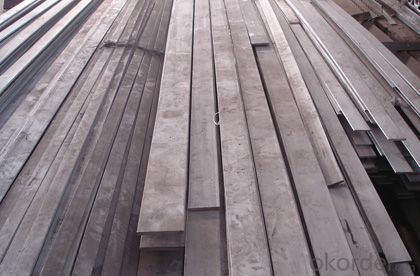
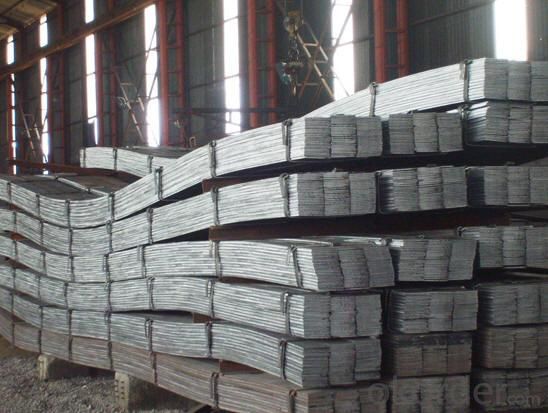
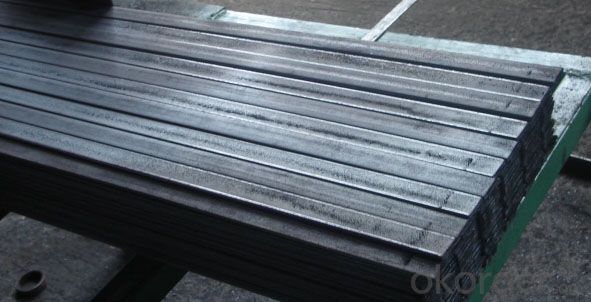
FAQ:
Q1: How do we guarantee the quality of our products?
A1: We have established an advanced quality management system which conducts strict quality tests at every step, from raw materials to the final product. At the same time, we provide extensive follow-up service assurances as required.
Q2: How soon can we receive the product after purchase?
A2: Within three days of placing an order, we will begin production. The specific shipping date is dependent
- Q: Can steel flat bars be used for architectural applications?
- Indeed, architectural applications do permit the utilization of steel flat bars. Their versatility and durability render them appropriate for a multitude of architectural endeavors. They serve purposes both of structural support, such as in beams and columns, and of embellishment, exemplified by handrails or trim details. Architects may effortlessly manipulate and mold steel flat bars to fulfill particular design prerequisites, enabling the creation of distinctive and aesthetically pleasing structures. Moreover, architects enjoy a wealth of options in terms of sizes and finishes when selecting steel flat bars, granting them the flexibility to choose the most fitting material for their architectural projects.
- Q: Are steel flat bars suitable for load-bearing applications?
- Yes, steel flat bars are suitable for load-bearing applications. They are commonly used in construction and engineering projects where strength and durability are required to support heavy loads. The flat shape of the bar provides stability and resistance to bending or warping under pressure, making it an ideal choice for load-bearing purposes.
- Q: Can steel flat bars be used for manufacturing sports equipment or accessories?
- Steel flat bars have the capability to be utilized in the production of sports equipment and accessories. Steel, being a sturdy and long-lasting material, can endure the demands of sports activities. Steel flat bars can be molded and crafted into a variety of products, including baseball bats, golf clubs, weightlifting bars, bicycle frames, and more. The adaptability of steel enables it to be tailored and adjusted to meet specific sporting requirements. Moreover, the ease of welding steel flat bars offers additional flexibility during the manufacturing process. In conclusion, steel flat bars are an appropriate choice for manufacturing sports equipment and accessories due to their strength, durability, and capacity to be shaped into desired forms.
- Q: Are steel flat bars suitable for fabrication of support structures?
- Yes, steel flat bars are suitable for the fabrication of support structures. Steel flat bars are known for their strength and durability, making them ideal for providing support in various construction and fabrication projects. They have a wide range of applications, including the construction of bridges, buildings, and other support systems. The flat shape of the bars allows for easy welding, bolting, or fastening, making them versatile in terms of fabrication. Additionally, steel flat bars can be easily cut and shaped to meet specific design requirements, making them a popular choice for support structures.
- Q: How do steel flat bars contribute to the overall efficiency of industrial structures?
- Steel flat bars contribute to the overall efficiency of industrial structures in several ways. First and foremost, their durability and strength make them an ideal choice for structural components. Steel flat bars are known for their high tensile strength, which means they can withstand heavy loads and provide structural stability. This strength allows for the construction of taller and more complex industrial structures that can house various equipment and machinery. Furthermore, steel flat bars are highly versatile and can be easily fabricated, cut, and welded to fit specific design requirements. This flexibility enables engineers and architects to create customized industrial structures that maximize space utilization and optimize workflow. Whether used as support beams, braces, or reinforcements, steel flat bars can be tailored to meet the specific needs of a project, reducing construction time and costs. In addition, steel flat bars are resistant to corrosion and can withstand extreme weather conditions, making them suitable for both indoor and outdoor industrial structures. This resistance ensures longevity and reduces the need for frequent maintenance, saving both time and money in the long run. Moreover, steel flat bars are readily available and cost-effective compared to other materials. Their widespread availability and standardized sizes make procurement and construction processes more efficient, resulting in shorter lead times. This accessibility also allows for easy repairs and modifications, ensuring that industrial structures can adapt to changing needs and technologies without significant disruptions. Overall, steel flat bars contribute to the efficiency of industrial structures by providing strength, versatility, durability, and cost-effectiveness. Their usage enhances the structural integrity of buildings, optimizes space utilization, reduces maintenance requirements, and allows for easy customization. As a result, steel flat bars play a crucial role in the construction of efficient and reliable industrial structures.
- Q: 8 what is the flat density?
- Flat, refers to the width 12-300mm, thickness 4-60mm, cross section is rectangular in shape and with a blunt edge of steel.
- Q: Can steel flat bars be easily machined or drilled?
- Machining or drilling steel flat bars proves to be a simple task. Steel possesses remarkable machinability, allowing it to be effortlessly manipulated, sliced, or drilled using an array of tools and techniques. Steel flat bars, with their flat and uniform shape, particularly lend themselves to machining and drilling operations. One can easily work on them with drills, milling machines, lathes, or any other equipment commonly employed in metalworking. Nonetheless, it remains crucial to carefully select suitable cutting tools and speeds in accordance with the specific grade and hardness of the steel being machined. Moreover, incorporating appropriate coolant or lubrication during the machining process can effectively extend the lifespan of tools and enhance the overall quality of the finished product.
- Q: How do steel flat bars compare to rubber flat bars?
- Steel flat bars are significantly stronger and more durable than rubber flat bars. Steel flat bars have a higher tensile strength, making them more resistant to bending or breaking under heavy loads. They are also more resistant to wear and tear, making them suitable for high-impact applications. On the other hand, rubber flat bars are more flexible and provide better shock absorption, making them suitable for applications where vibration or impact need to be minimized. Ultimately, the choice between steel and rubber flat bars depends on the specific requirements of the application.
- Q: Can steel flat bars be used for manufacturing construction equipment?
- Yes, steel flat bars can be used for manufacturing construction equipment. Steel flat bars are commonly used in the construction industry for various applications such as structural supports, framework, and reinforcement due to their strength, durability, and versatility. They provide stability and reliability, making them suitable for manufacturing heavy-duty construction equipment.
- Q: Can steel flat bars be welded or joined together?
- Yes, steel flat bars can be welded or joined together. Welding is a common method used to join metal components, including steel flat bars. Welding involves melting the edges of the steel bars and fusing them together using a welding filler material. This creates a strong and durable bond between the flat bars. However, it is important to ensure that the steel flat bars being welded are of the same or similar composition to prevent any issues with the weld quality. Additionally, proper welding techniques and equipment should be employed to achieve a high-quality weld and ensure the structural integrity of the joined steel flat bars.
Send your message to us
Carbon stainless steel flat bar for construction
- Loading Port:
- Tianjin
- Payment Terms:
- TT OR LC
- Min Order Qty:
- 10000 m.t.
- Supply Capability:
- 100000 m.t./month
OKorder Service Pledge
OKorder Financial Service
Similar products
Hot products
Hot Searches
Related keywords
